In: curated

The Land of Error | Ioanna Sakellaraki
July 16, 2022The Land of Error | Ioanna Sakellaraki
Ioanna Sakellaraki is best known for her evocatively mournful series The Truth is in the Soil, and it was the work of hers that initially caught my attention. But perusing her site, the more enigmatic and haunted The Land of Error series is the work that keeps pulling me back to it, and inspires me to share it with others.
The only descriptor from the artist for this work is the following bold – and surely intimidating yet also evocative – declaration:
THE FUTURE IS SPLIT BETWEEN MANMADE ANTITHESIS AND PARODIES OF HUMAN PREDICTION. THIS IS WHERE FICTION FINDS ITS JUSTIFIED PLACE.
Sakellraki’s work is often about memory, and an element of mourning. I would inject here that looking at these images, I am reminded of Percy Bysshe Shelley’s poem Ozymandius (1918) : Nothing beside remains. Round the decay / Of that colossal wreck, boundless and bare, The lone and level sands stretch far away. Realizing that poem was written as WWI came to a close, I see correlations between the enigmatic post industrial wastelands that Sakellraki captures, and that earlier era’s destruction and desolation through technology. Quiet scenes of abandonment and detritus…..
Less historical, but equally dark, I’ve begun re watching the science fiction series FRINGE: and Sakellraki’s images also bring to mind the fictional group ZFT, from that show, with story arcs often centred upon world – building – and, of course, world – destroying, too. From that show’s mythology: ZFT in fact stands for “Zerstörung durch Fortschritte der Technologie” which is German for “Destruction by advancement of technology”….
More of Ioanna Sakellaraki’s artwork can be seen here, and more of this series can be enjoyed here.
~ Bart Gazzola
Read More
War Map Dress Trilogy | Carolyn Wren, 2003-2004
June 30, 2022Carolyn Wren | War Map Dress Trilogy, 2003-2004
(lino blocks, hand-printed on Dupont silk, thread, zippers, mannequins, model airplanes, black paint)
I encountered these towering figures during Wren’s retrospective exhibition Task At Hand at the now shuttered Rodman Hall Art Centre several years ago. Standing in the large back gallery space, the three female figures dominated the room, with the flow of their dresses spilling out from them, pooling around them on the gallery floor.
Visiting this show numerous times, I found that different ideas came to the fore with different interactions, from initial wonder to later, more critical consideration. When an artist / writer friend, Anna Szaflarski, visiting Niagara, came with me on one occasion, she saw the works in a very different light than I had, initially. Unsurprising, really, as when Szaflarski and I first met, it was around her exhibition at NAC about the historical detritus – or lack thereof – of General Motors’ legacy in St. Catharines, and I believe we connected over an irreverent honesty about history, the region, and the intersecting if conflicting stories of the place we both grew up in….
My reading had been informed by Wren’s own words, which are as follows: The ingenuity of Christopher Clayton Hutton’s invention of silk maps for the British Royal Air Force during World War II enabled pilots to use lightweight and durable maps to help them reach safety in times of crisis, and inspired women to make dresses out of the silk maps as their men returned home. The maps used by Wren in the dresses were made in Europe by the Canadian government and shipped to Canada for families to follow the movements of their loved ones fighting in the war. Alluding to multiple layers of symbolism of the landscape in relation to the body, and reflecting on war and the politics of Feminism (viewpoint, memory, and identity), The War Map Dress Trilogy is more about history, location, distances, than it is about terrain.
I talk a lot about ‘contested narratives’: but this story, this Curator’s Pick is very much about that. Szaflarski – a former student of Wren’s, as Caroline taught in Niagara for some time, and helped shape a few generations of artists and art appreciators – upon seeing the exhibition, and these ‘women’, spoke more in a manner reminiscent of Barbara Kruger’s famous – and still relevant – artwork that declares that YOUR BODY IS A BATTLEGROUND. These battlefield maps, on dresses hanging on mannequins without heads or hands, look more like spaces to be attacked, or acted upon, utterly passive and just victims…. (“Afterwards she could not walk for a week, her feet would not fit into her shoes, they were too swollen. It was the feet they’d do, for a first offence. They used steel cables, frayed at the ends. After that the hands. They didn’t care what they did to your feet and hands, even if it was permanent. Remember, said Aunt Lydia. For our purposes your feet and your hands are not essential.” Margaret Atwood, A Handmaid’s Tale).
More of Carolyn Wren’s work can be seen here. A recent curatorial project of mine, based upon the Rodman Hall Collection, and which included Wren’s work, can be seen here.
Photographs are by Sandy Fairbairn and the author.
~ Bart Gazzola
Read More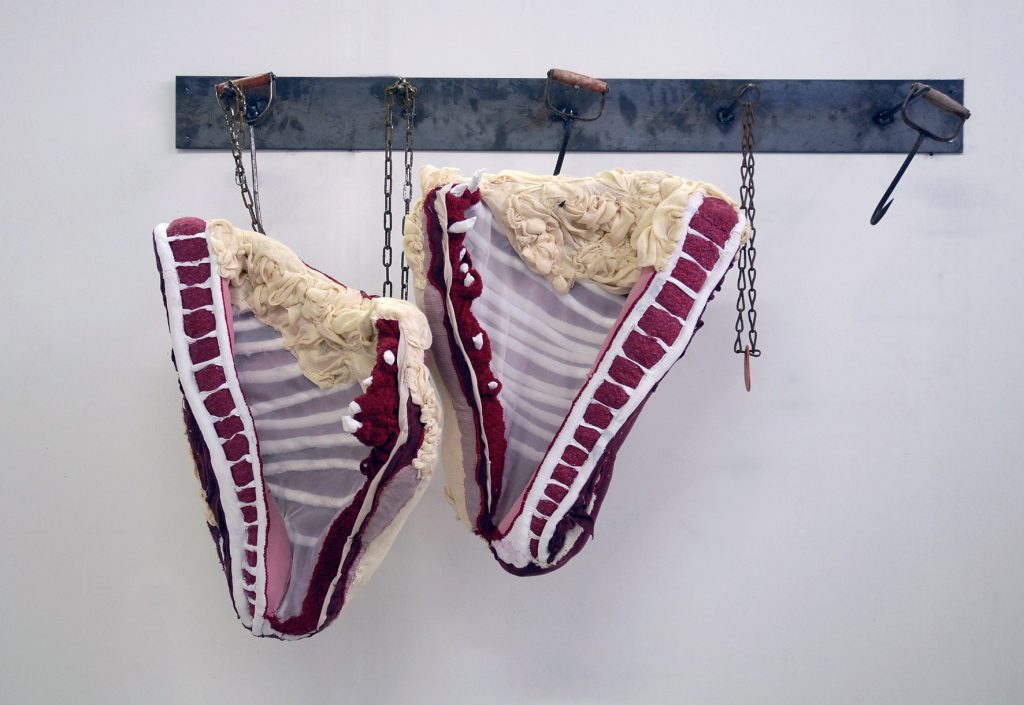
TAMARA KOSTIANOVSKY | ACTUS REUS
June 17, 2022Tamara Kostianovsky | Actus Reus
I am afraid the good woman did not realize how difficult it is to cut up a body, never having done so herself. (Margaret Atwood, Alias Grace)
To the Puritan all things are impure, as somebody says. (D.H. Lawrence, Sketches of Etruscan Places)
Tamara Kostianovsky’s artworks are disquieting; that is meant as praise. What her sculptures in the body of work titled Actus Reus – both specific elements and the larger installations of multiple components – do is allude, and we do the rest. What we initially ‘think’ we’re looking at is not at all what we’re truly observing. An initial revulsion turns to seduction, and we find ourselves drawn in by both the formal attraction as well as the conceptual fracture that only makes her work more enticing.
It’s almost appropriate, then, that one of the works that comprises Actus Reus is titled Abnegation (which means “the act of renouncing or rejecting something”); or that the name of the series itself is a ‘criminal’ legal term. Actus Reus is “sometimes called the external element or the objective element of a crime….the Latin term for the “guilty act” which, when proved beyond a reasonable doubt in combination with the mens rea, “guilty mind”, produces criminal liability in the common law−based criminal law jurisdictions of numerous countries….” There is almost a culpability in our own interactions with these artworks…..
Other works in this series – What It Once Was (2011), One and a Half (2008), Bound (2008), Venus (2011), Elegy (2009) – all leave the viewer feeling as though they’re looking upon – and enjoying gazing upon, devouring with their eyes – something that is forbidden, not meant to be seen, and definitely not be enjoyed, as though illicitly consuming visual pleasure from them….
Before I delve further into my interpretations of Kostianovsky’s work, her statement is as follows: The discovery of a world concealed behind the skin took form in my adolescence while working at a surgeon’s office, where veins exploded into waterfalls, cut ligaments set free the muscles they once contained, and chunks of fat poured over tissues of various colors and textures. A fascination with these encounters put the body at the center of my work, allowing me to use this imagery to reflect on consumption, ecology, and the voracious needs of the body.
Read more of Bart Gazzola’s thoughts on this work here.
Read More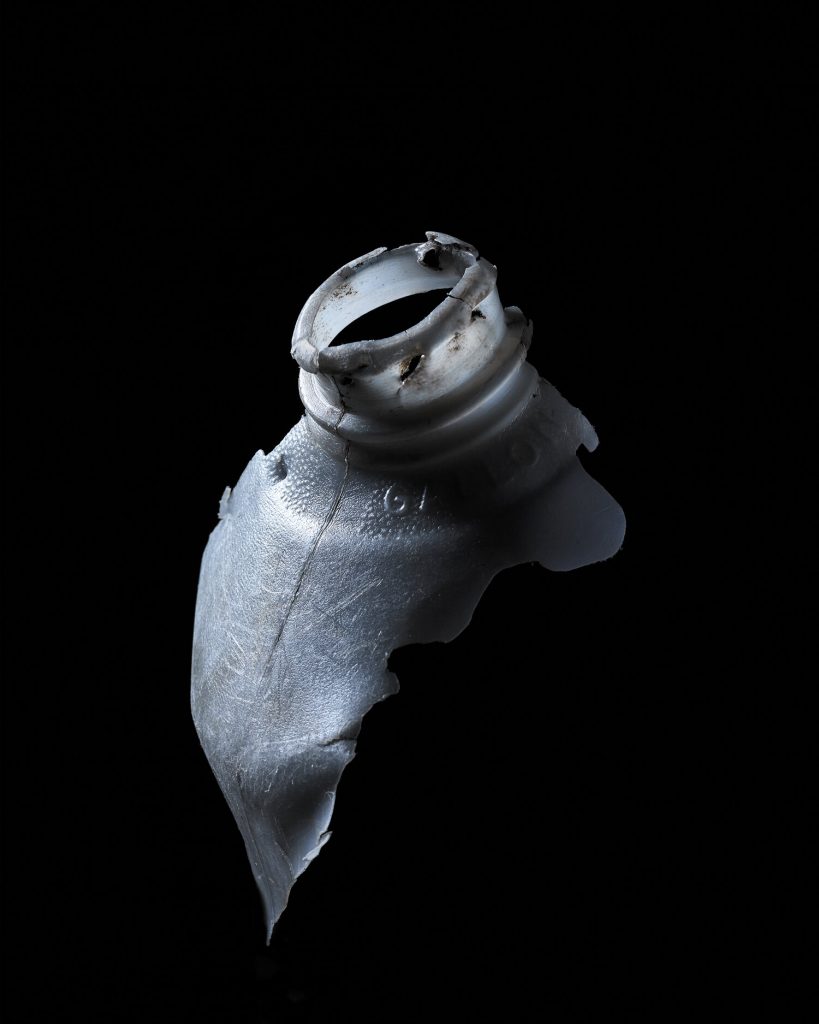
Jug Top, Lake Superior | John Healey
June 6, 2022Jug Top, Lake Superior | John Healey
“Plastic Beach is a set of still life images of plastic refuse discovered along the shores of the Great Lakes and key locations along the St. Lawrence river.
Here, discarded shopping bags, fragments of milk jugs, and crushed bottle caps — among other things — are reanimated to show us the carelessness with which we treat this habitat that is home to millions of creatures.
It reminds us of the cost of convenience, and serves as documentation of the relentless poisoning of the environment and ultimately ourselves.”
– J. Healey
John Healey was born in Toronto and grew up along the St. Lawrence River in Brockville, Ontario. Since 2015 he has devoted himself to lens-based image creation and education. John has just completed an artist in residency and is currently a full-time educator at the School of The Photographic Arts: Ottawa. He lives with his wife Amy, and Arno their Boston terrier.
~ Peppa Martin
Read More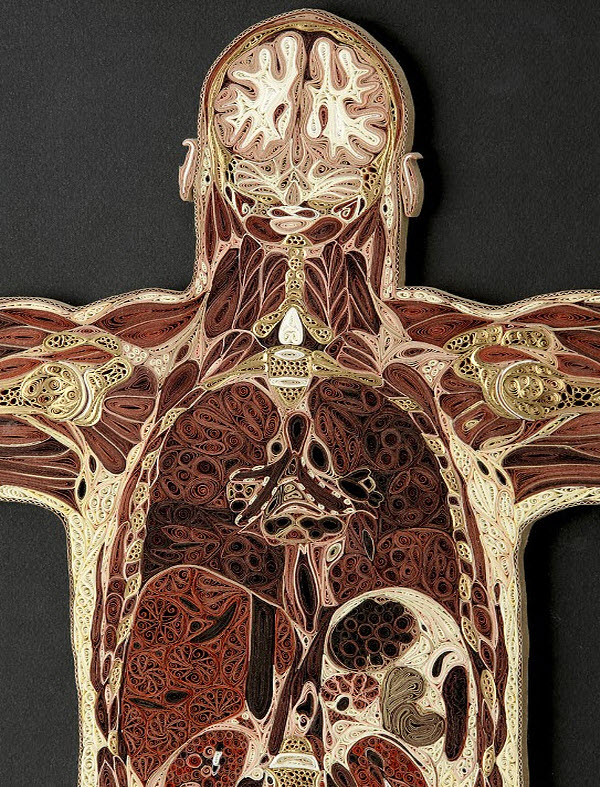
The Tissue Series | Lisa Nilsson
May 7, 2022The Tissue Series | Lisa Nilsson
Everything that has beauty has a body, and is a body;
everything that has being has being in the flesh:
and dreams are only drawn from the bodies that are.
(D. H. Lawrence)
Lisa Nilsson’s works are immediately visceral. But when you learn how they’re assembled, that bodily aesthetic, suggesting a wetness, a moistness, if you will, suddenly becomes dry and almost antiseptic.
This image is from her series of Anatomical Cross-Sections in Paper, and the artist offers the following about them and her process: These pieces are made of Japanese mulberry paper and the gilded edges of old books. They are constructed by a technique of rolling and shaping narrow strips of paper called quilling or paper filigree. Quilling was first practiced by Renaissance nuns and monks who are said to have made artistic use of the gilded edges of worn out bibles, and later by 18th century ladies who made artistic use of lots of free time. I find quilling exquisitely satisfying for rendering the densely squished and lovely internal landscape of the human body in cross section.
It’s interesting to consider the reference to bibles here – a tome that has much to say about the body and it’s ‘regulation’ (I’m old enough to remember the NEA ‘controversy’ when Mapplethorpe and Serrano were demonized by the Republican Helms, and how Lucy Lippard cast that in terms of adversarial religious dogma regarding interpolations of the body. Both artists mentioned here self identify as catholic and the late and unlamented Jesse Helms – their most bilious attacker – was a rabid evangelical). How the body is to be ‘regulated’ is also a fiery topic in the United States, right now….
I’m also reminded of the intersection between science and art, in terms of medical illustration, and an exchange from Katherine Dunn’s excellent novel Geek Love:
“What made you,” clearing my throat, “decide to be an artist?”
Her eyes flick at my feet under frowning brows. “No, no. A medical illustrator. For textbooks and manuals … ” Her tongue sneaks out at a corner of her mouth as she slaps stroke after vicious stroke onto the defenseless page. “See, photographs can be confusing. A drawing can be more specific and informative. It gets pretty red in there. Pretty hot and thick.”
More of Lisa Nilsson’s Tissue Series can be enjoyed here. Her work is meticulous and enthralling – like a bloodless autopsy.
All photographs here are by John Polak. ~ Bart Gazzola
Read More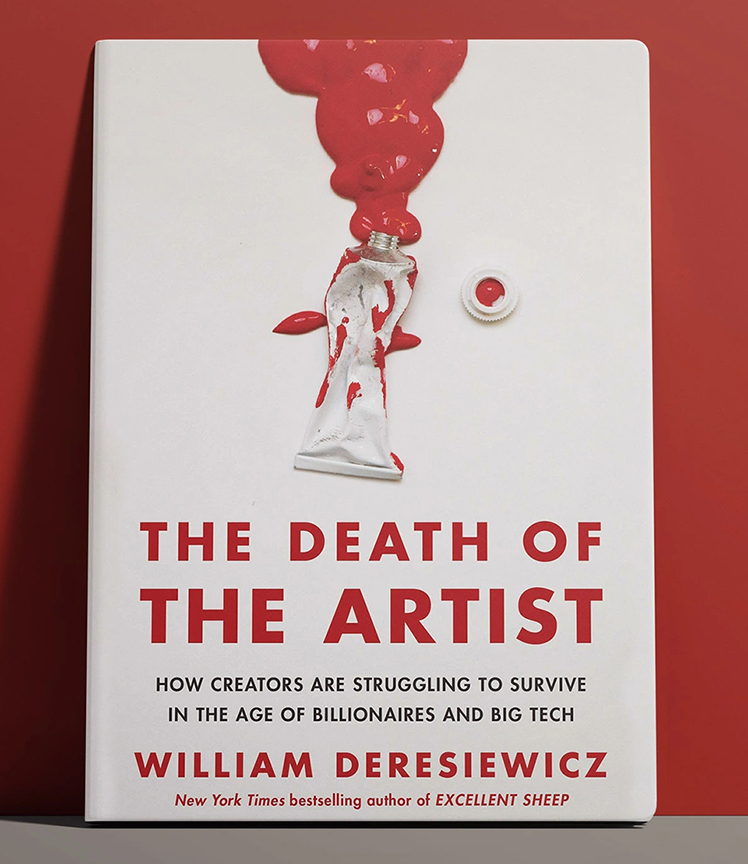
The Death of the Artist | William Deresiewicz, 2020
June 3, 2022The Death of the Artist: How Creators Are Struggling to Survive in the Age of Billionaires and Big Tech | William Deresiewicz, 2020
I cannot think of another field in which people feel guilty about being paid for their work—and even guiltier for wanting to be.
This is – bluntly – a difficult book. It was necessary for me to read it in installments, and I know that many of my friends who are artists had to do the same. Perhaps it was like a series of inoculations against a disease, spaced out to have maximum curative effect. It motivated me to revisit Robert Hughes’ essay Art and Money, from his book Nothing If Not Critical, and simultaneously I was reading Blockchain and the Law: The Rule of Code by Primavera De Filippi and Aaron Wright (as part of my ongoing attempt to understand the phenomenon of NFTs better). Three decades separate those two books, and they make an interesting extended bibliography to The Death of the Artist. Sometimes there’s concurrences, more often disagreement, and a feeling that more time must have passed between their publication, as the gulf is so wide that Doris Lessing’s idea that ‘nothing seems more improbable than what people believed when this belief has gone with the wind’ floated in the air, as I read.
For anyone who’s worked in culture, or has attended art school or various other educational institutions focused upon producing ‘creators’, there are numerous assertions made in William Deresiewicz’ book that will ring true, in a rueful manner that many of us may have denied (or sadly, will continue to do so, unto the pauper’s grave). Some of the stories from the artists – of various stripes – that Deresiewicz spoke with, that inform this book, will be very familiar. My own experience in public galleries or artist run centres, and attempting to negotiate being a cultural worker in other spheres, match the stories here.
This book might offend you, but it will offend you in all the correct ways, and perhaps offend all the appropriate people.
If art is work, then artists are workers. No one likes to hear this. Nonartists don’t, because it shatters their romantic ideas about the creative life. Artists don’t either, as people who have tried to organize them as workers have told me. They also buy into the myths; they also want to think they’re special. To be a worker is to be like everybody else. Yet to accept that art is work—in the specific sense that it deserves remuneration—can be a crucial act of self-empowerment, as well as self-definition.
A tangent, not unrelated, if I may, that aligns with Deresiewicz’ research: a friend is an artist, exhibiting widely, and has been teaching as a sessional for several years. She is me, twenty years ago: she has less protection, security and opportunity than I did, despite both of us doing ‘all the right things.’ We are – like many workers – in a steady decline, that seems not only unstoppable, but unrecognized. Another gem from Deresiewicz’ book: The writer and visual artist Molly Crabapple, another exemplary leftist, puts it like this in her essay “Filthy Lucre”: “Not talking about money is a tool of class war.”
Art is hard. It never just comes to you. The idea of effortless inspiration is another romantic myth. For amateurs, making art may be a form of recreation, but no one, amateur or professional, who has tried to do it with any degree of seriousness is under the illusion that it’s easy. “A writer,” said Thomas Mann, “is someone for whom writing is more difficult than it is for other people.” More difficult, because there is more for you to do, more that you know how to do, and because you hold yourself to higher standards.
If I ever dared to revisit academic or educational spaces – or if I was let back in – this text would be required reading, not just for those wanting to become artists, but especially for those who would go on to be gallerists, cultural workers and even players within the political sphere, as in some ways this book is a warning. But there’s a large dollop of Cassandra in cultural spaces, especially in Canada (several years ago, I was pilloried for shaming an artist run centre for not paying emerging artists, but the abuse was worth it as they – eventually – did the right thing). Deresiewicz’ research, and the testimonials in this book, can help break that complacency….
The Death of the Artist: How Creators Are Struggling to Survive in the Age of Billionaires and Big Tech is not so much a warning, as a reality. It is a severe, but indispensable, book.
All quotes in italics are from Deresiewicz’ book. As usual, I suggest visiting a local bookstore (such as Someday Books) to pick up this text.
~ Bart Gazzola
Read More
Walker Evans – James R. Mellow
May 19, 2022Walker Evans
James R. Mellow
Basic Books; Revised ed. edition (Oct. 11 2001)
Walker Evans is one of the most famous American documentary photographers of the past 100 years and his images will stand for another hundred at least. While every serious photographer is familiar with his work (the best known of which was shot during the 1930’s for the U.S. Farm Security Administration as per the examples below), there have been relatively few books that discuss Evans as a man. James R. Mellow captures his complexities in this eminently readable biography, published in 2001.
What makes particularly interesting reading is Evan’s evolution as an artist, from failed student in the Mid-West US, to failed writer in Paris, to acclaimed photographer on his return to New York in the late 20’s and early 30’s. The book quotes extensively from his letters and other writings. One can almost hear him speaking… I imagine his voice to be a low pitched, slow drawl; a mix of Henry Fonda, Peter Coyote and Alan Rickman (minus the accent).
Evans comes across as dour and fatalistic, yet strangely still likeable. Much of his writing describes his unhappiness with things as they are, whether it be his annoyance with his mother, his dissatisfaction with the quality of the prints made from his negatives or his despondence about his romantic relationships. Many of his friendships with other famous artists are discussed, including Ben Shahn, Steven Crane and Hanns Skolle.
The book offers details about the trips Evans made to do his photography and specifically the trips he made with author James Agee as they worked on the seminal Let Us Now Praise Famous Men. Evans plays the role of aesthete opposite Agee’s sensualist, the collision of which resulted in a book acclaimed for its intimacy and realism… a strong documentary account of the lives of sharecroppers and their families in the American South during the Great Depression.
It is sad but somehow inevitable that Evans ends his days as somewhat of an alcoholic / academic recluse. Mellow’s reliance on Evans’ own words leave you feeling as if you really knew him, that you cared about him, but weren’t overly close to the actual man behind the photographs, because of his determination to keep people at bay.
Walker Evans by James R. Mellow is available from numerous online retailers.
~ Mark Walton
Read More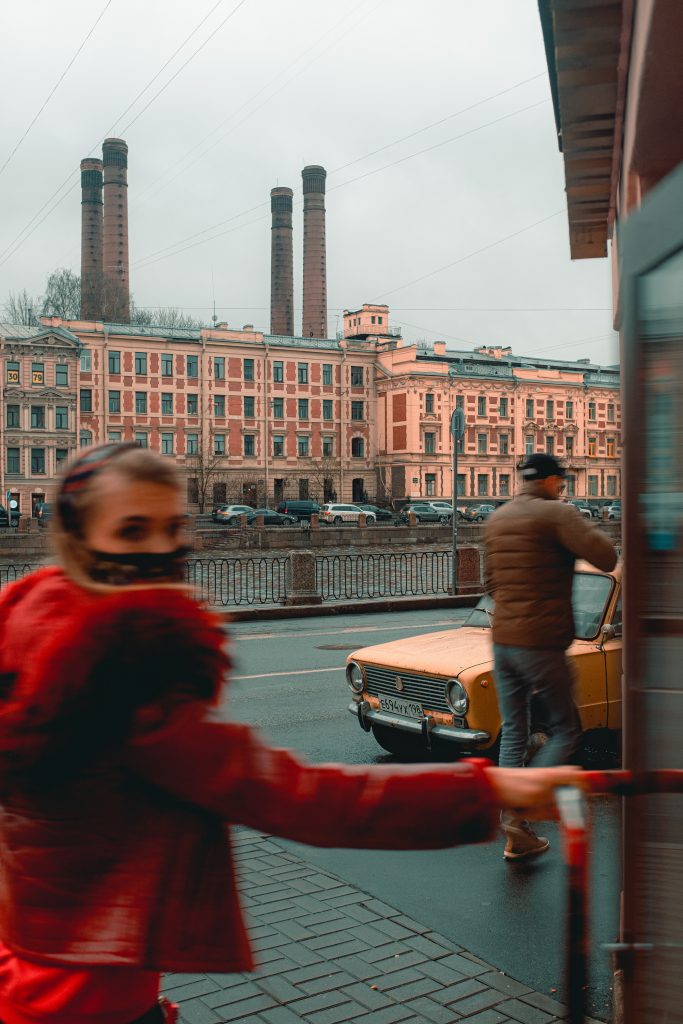
Around the Red | Viktor Balaguar
April 14, 2022Around the Red | Viktor Balaguar
Balaguer’s series Around the Red (which includes the image shared here) is perhaps my favourite of his series (a hard decision, though, as Teriberka or Street Photography for Xiaomi are enchanting, too).
Often, his images of St. Petersburg and Moscow suggest a perpetual winter in Russia, but these are less so of that style. The vibrant reds – which never seem forced and hold your eye without overly dominating the scene – run through these works, which are captured moments of places and people. The title implicates historical factors, of course, as Russia and the world are still negotiating the rise and fall of the USSR, in contemporary Russia and beyond those borders (sometimes acknowledging what happened, sometimes not, as we dance ‘around the red’). There is no point when ‘then’ stops and ‘now’ begins in sites of contested narratives (like St. Petersburg or Moscow, Eastern Europe or even in a larger world history), and Balaguer’s Around the Red sometimes hints – and sometimes hammers – at that, visually.
I should add that I began writing this post prior to the most recent acts of war by Russia, but that simply adds more weight to the geo – political insinuations of Balaguer’s scenes….perhaps, as Aleksandr Solzhenitsyn warned us in his The Gulag Archipelago if you “dwell on the past…you’ll lose an eye. Forget the past and you’ll lose both eyes.” To be honest, I had mixed feelings about sharing this work, considering the current political climate, but will temper that with the recommendation of Timothy Snyder’s book Bloodlands: Europe Between Hitler and Stalin, from 2010…..
From here : French photographer, architect and interior designer Viktor Balaguer fell in love at first sight with the ‘Venice of the North’ where he has settled with his family. “Saint Petersburg is a romantic city where you can go from a narrow street to wide avenues, where you follow the sublime and immense Neva River that is completely frozen for part of the year,” he said, calling it “A city of strong contrasts, with a succession of magical palaces and imperial facades whose entrance gates you must cross and visit the dark backyards of the Soviet era. A city deeply melancholic by nature, immersed in a relaxing rhythm of life and permanently open to contemplation.”
In selecting this image, I had a difficult time, as any of the vignettes in Around the Red by Balaguer are worthy of consideration: you can see more of them here, and many of his other fine images at both his IG: @viktor_balaguer and his site.
~ Bart Gazzola
Read More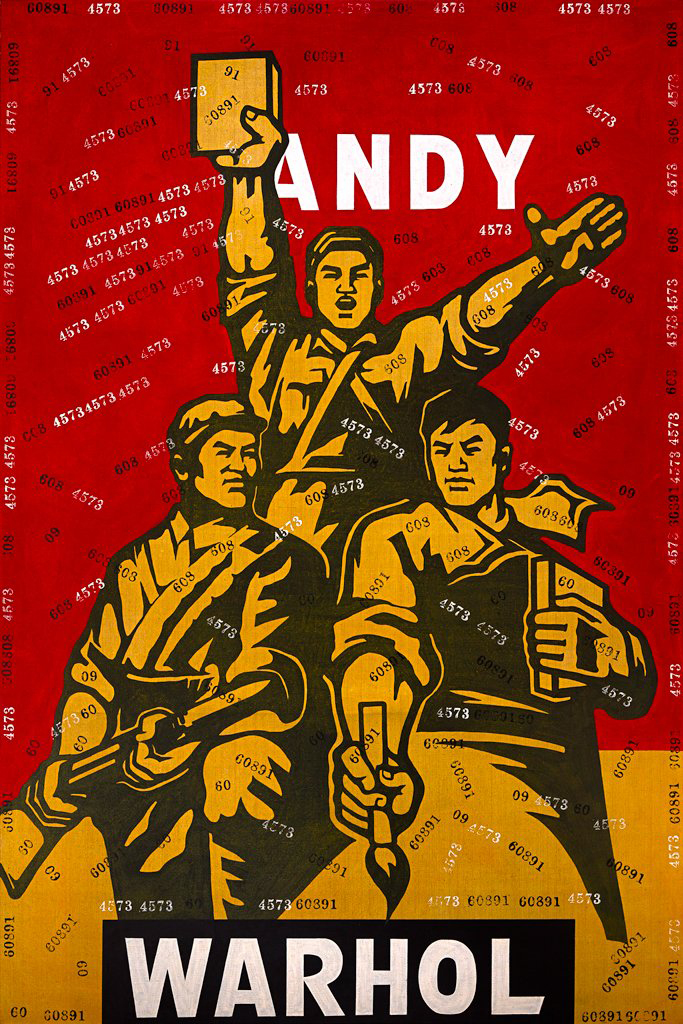
Great Criticism Series: Andy Warhol, 2001 | Wang Guangyi 王广义
April 7, 2022Great Criticism Series: Andy Warhol, 2001 | Wang Guangyi 王广义
A few years ago I re-read George Orwell’s All Art Is Propaganda. Orwell is a hot topic these days, too often cited by those who haven’t read him and barely – or refuse to actually – understand the points he was making. Here in Niagara, a mayor responded to an appropriate censure – and consequences – for his dishonesty and religious gibberish by misquoting Orwell, and his smug ignorance was more akin to what Orwell opposed, and criticized, than what the author supported.
Propaganda is perhaps most dangerous not when we can recognize it, but when it has become ubiquitous – and this is on my mind when encountering the works of Chinese artist Wang Guangyi (王广义), who (in that often sloppy way that art historians and critics try to slap a label on something, dismissing nuance and dissent) has been described as a Chinese Political Pop Artist.
There is much more at play here than that: “I came to realize that the essence of art is its ancestry, its history,” the artist has said. “When creating a work of art, one’s head is full of these historical considerations; an encounter with what has been and its entry into the process of rectification.”
“Great Criticism is Wang Guangyi’s most famous cycle of works. These works use propaganda images of the Cultural Revolution and contemporary logos from Western advertisements. Wang Guangyi began this cycle in 1990 and ended it in 2007 when he became convinced that its international success would compromise the original meaning of the works, namely that political and commercial propaganda are two forms of brainwashing.”
An interesting and subtle allusion to the vagaries of propaganda and control are in the ‘two repeating, randomly selected numbers [that] can be found stamped across the composition. During the Cultural Revolution (1966 – 1976), two licenses were required for the production of any image for public consumption: one to produce the image, and another to distribute it. These numbers then reference the extreme restrictions on creative production during Wang’s formative years.” (from here)
Slavoj Žižek has asserted (or warned, edit as you will) that we can imagine the end of the world more easily than we can imagine the end of capitalism. Another intersecting trope – and why I chose this work, of his many fine pieces in this series, that lumps in the idea that is ‘Warhol’ with other capitalist monoliths like McDonalds, Disney or Pepsi – is the rise of the NFT in the larger art world, where money not only ‘creates’ taste, but invalidates any other dissenting concerns. Or, as Warhol warned us, Art is what you can get away with…just like propaganda.
Wang Guangyi (王广义)’s site is here.
~ Bart Gazzola
Read More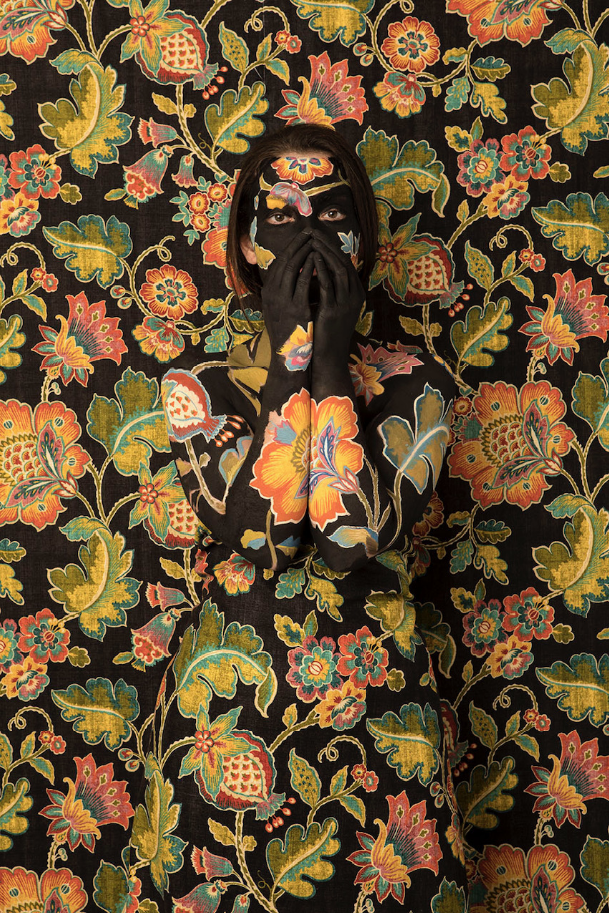
The Whisper | Cecilia Paredes, 2021
March 31, 2022The Whisper | Cecilia Paredes, 2021
“I’ve got out at last,” said I, “in spite of you and Jane. And I’ve pulled off most of the paper, so you can’t put me back!”
Now why should that man have fainted? But he did, and right across my path by the wall, so that I had to creep over him every time!”
(The Yellow Wallpaper, Charlotte Perkins Gilman)
Paredes’ self portraits are unsettling: in this one, she actually makes eye contact with us, making it harder to ignore, yet easier to ‘find’ her, within the composition. Though her work is a performative metaphor for our relationship with the environment, one can’t help but also see a statement about women and the still too frequent dismissal of female artists, in her artworks. The ‘wallpaper’ of The Whisper – in conversation with a friend – brought to mind the story I cited at the beginning of this piece, which was published in 1892, and touches upon many of the themes I’ve mentioned. This story can be read here: but I offer a brief taste of its haunting narrative below.
The narrator devotes many journal entries to describing the wallpaper in the room – its “sickly” color, its “yellow” smell, its bizarre and disturbing pattern like “an interminable string of toadstools, budding and sprouting in endless convolutions,” its missing patches, and the way it leaves yellow smears on the skin and clothing of anyone who touches it. She describes how the longer one stays in the bedroom, the more the wallpaper appears to mutate, especially in the moonlight. With no stimulus other than the wallpaper, the pattern and designs become increasingly intriguing to the narrator. She soon begins to see a figure in the design. Eventually, she comes to believe that a woman is creeping on all fours behind the pattern. Believing she must free the woman in the wallpaper, she begins to strip the remaining paper off the wall.
‘Cecilia Paredes creates self-portraits that play with disguise and metamorphosis. She is known for a series in which she appears to vanish into a graphic backdrop. These “photo performances,” as the artist calls them, often involve her painting herself with bright, intricate patterns before documenting her body against a wall of the same motifs. Influenced by nature, Paredes also transforms herself into animals in realistic, glamorous studio portraits….Paying tribute to the flora and fauna of her native Peru, Paredes creates layered statements of her own identity. Her works also speak to humans’ relationship with nature and our responsibility to threatened environments.’ (from here)
More of her work can be seen at her Instagram @ceciliaparedesarte and a longer article about this series can be enjoyed here.
~ Bart Gazzola
Read More
Recent Comments